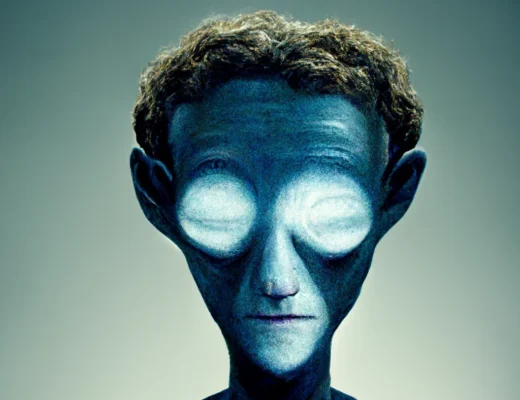How did we get from Chuck Berry, Bill Haley and the Comets and the Beatles to here, where the most anticipated albums of the year have been on the airwaves for decades?
This era-by-era history of rock music will answer all, including what went wrong at the turn of the century and how breaking rock acts are slowly creeping back into the mainstream.
How Has Rock Music Changed Over Time: A 101 on Every Definitive Era
With every new iconic artist, sub-genre, culture shift and technology, there has been markable interconnected shifts in the rock music industry. Furthermore, many of the most influential artists are left out of the narrative. With that in mind, we’ll do our best to work through the biggest rock milestones after rock spawned from rock n roll.
The 1940s & 1950s
In the 1940s, rock bands started to sway from the Rock n Roll sound that had been around since the 1920s. However, it wasn’t until the mid-50s in America that Rock music started to grip the nation – and beyond. After rock came around and revolutionised the music industry, its sonic electric guitar imprint has been everlasting. During the 50s, rock was an infusion of rock n roll, rhythm & blues, and country. In 1955, Billy Haley gave Rock n Roll its first-ever number 1 single with the release of Rock around the Clock. Little Richard, Chuck Berry and Elvis Presley quickly started snapping at Bill Haley’s chart-topping heels in 1956.
The 1960s
Once rock music had amassed a staunch audience in the 50s, the genre came into its own in the 60s. Prominent artists sprung up in the US, the UK and across the globe. From girl groups, such as the Shangri-Las, to surf rock icons, including Dick Dale and the Beach Boys, to Motown icons, such as Roy Orbison, many of the most influential names surfaced in the 60s, while it was becoming even more central to mainstream culture. Yet, it wasn’t until the British bands, the Kinks, the Stones and the Beatles, entered the mix that the infatuation with rock music started to take hold. The mere mention of the Beatles was enough to drive fanatics into hysterics. In 1965, Bob Dylan showed the globe a brand-new face of rock music with the advent of art-rock. After the assassination of MLK and Robert Kennedy, rock music started getting angrier and more political, which saw the rise of Creedence Clearwater Revival and Led Zeppelin.
The 1970s
After the drug-fuelled experimental era in the 60s, rock music started to take a more solid form in the 70s. After the Vietnam war, music fans were on the hunt for euphoria, and ABBA delivered with their freshly orchestrated disco sound, which moved away from the edgy intoxicated vibes that the 60s artists were keen to flaunt. There was an explosion of subgenres in the 70s, which is by no means limited to punk rock, prog rock, glam rock, funk rock, Southern Rock and hard-rock. Some of the most defining rock artists of this era include Deep Purple, Pink Floyd, The Who, David Bowie, the Eagles, Black Sabbath, Fleetwood Mac and Queen.
The 1980s
After the death of disco and rock’s mainstream reign started to lose its lustre, things got darker with the invention of heavy metal, alt-rock, goth rock, and post-punk. For music fans not swayed by the furore of metal, New Wave, Electronica and Hip Hop also started taking off in the 80s, an era that became defined by its new electronic technology. The Police, Duran Duran, Metallica, Aerosmith, Guns N Roses and Iron Maiden all shared plenty of chart dominance, and for the first time, rock music wasn’t just a revolutionary act; it was a benevolent one too. The 80s saw the official rise of the Charity Rock concerts, including the iconic Live Aid performance where Queen played to 72,000 attendees in 1985.
The 1990s
You can almost hear the intro to Nirvana’s Smells Like Teen Spirit when the 90s come up in the context of rock music. The 90s was the rise of alt-rock and independent artists who realised that they didn’t need backing from the big four labels. In America, the grunge and no-wave sub-genres were kicking up aural storms with bands such as Alice in Chains, Nirvana, Pearl Jam, Mud Honey and Screaming Trees, bringing brand-new meaning to the word discord. Across the pond in the UK, the sound was slightly tamer but infectious all the same, while Oasis, Blur, The Manic Street Preachers and Suede all started to dominate the charts. After Kurt Cobain died in 1994, rock followed suit.
2000 – 2022
Emo, pop-punk, nu-metal, metalcore and post-grunge were just a few of the sounds that brought in the turn of the century. Linkin Park, Green Day, Snow Patrol, Fall Out Boy, Blink 182, Foo Fighters, Weezer, My Chemical Romance, Deftones, Nine Inch Nails, Modest Mouse, Franz Ferdinand, The Offspring, Interpol and Muse all had their part to play in ensuring rock fans had fresh releases to sink their teeth in to. But it is indisputable; unlike with previous generations, rock music didn’t quite have the same mainstream pull anymore. But should rock ever have been about appeasing the planet in the same way pop artists clamour to.
In 2017, hip hop finally overtook rock music as the most popular genre. But don’t start arranging its funeral yet. Thanks to the internet era of music, the number of successful independent rock bands is on the rise, and we don’t expect that trend to diminish any time soon. And let’s not forget that hip hop is part of Rock n Roll’s heritage – so don’t be so quick to dismiss the Rockstar hip hop artists keeping the attitude of hip hop a part of our culture.
–
Now you know the history of rock music, get up to date with new trends by visiting our top indie music blogs. We cover the top breaking artists, allowing you to discover all the upcoming pioneers before they break into the mainstream.




No Comments